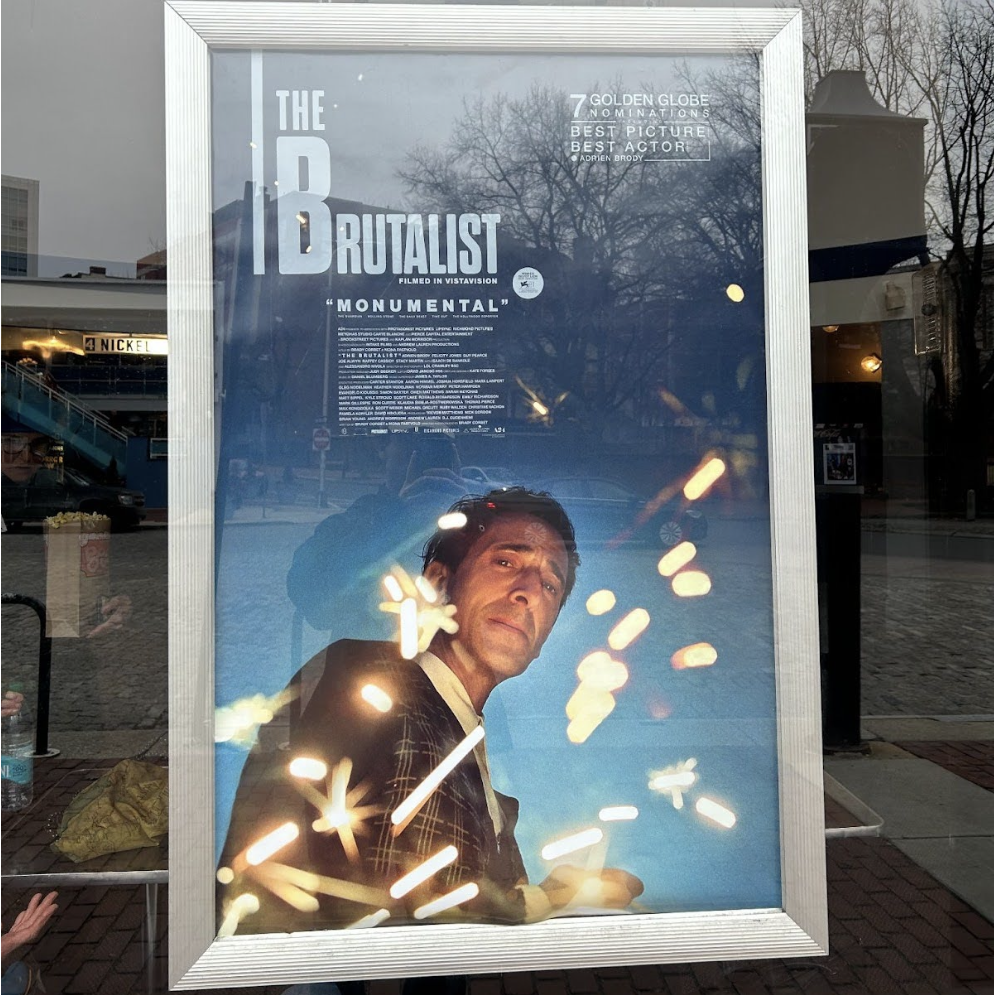
Who would have thought that one of the most acclaimed films of the year would be set in Doylestown, Pennsylvania? While this is far from the slice-of-life Bucks County story that tons of people were begging for, it is the next best thing: a nearly four-hour-long epic about a Hungarian architect set in the mid-20th century. “The Brutalist” is a behemoth, to put it simply. The film clocks in at a little over three and a half hours, including its 15-minute intermission, but somehow, someway, it does not feel long at all.
At no point in that extremely lengthy runtime is there a dull moment. Whether through remarkable visuals or incredible performances, director Brady Corbet always finds a way to fill the screen with something to capture the audience. So, for the hesitant moviegoers out there, do not be intimidated. Bring a friend, sneak some food in and buckle in for the long haul.
If, understandably, no one wants to go with you, do not fear. Even better than spending four hours with a friend is spending it with Adrien Brody, in what is far and away the greatest performance of the year and the greatest performance of his life (which is saying something). In the role of fictional Hungarian architect and Holocaust survivor László Tóth, Brody certainly delivers. Despite his explosive personality in the real world, Brody, for the thousandth time in his career, completely assumes the role and not for a single second is unbelievable as the tortured artist. Maybe he has some solid competition this year, but if this is not an Oscar-winning performance, then who knows what is?
Brody is far from the only standout in the film, however. Also nominated for supporting actor and actress, respectively, are Guy Pearce and Felicity Jones. Both give equally stunning performances, pushing and pulling Brody’s character in a way that is hard to imagine any other actors doing, and as a result, seem deserving of some recognition as well. The only real blemish on any of these actors’ campaigns is the minor use of artificial intelligence in regards to their voices. Compared to everything else the actors are doing throughout the movie, it is irrelevant. Besides, that is an article for another day.
This aforementioned pushing and pulling is what drives the film. Brody’s character, László, constantly finds himself between two pillars. An immigrant, László is stuck between his life and family back in Europe and his new life in Pennsylvania. He also struggles to find a balance between making his masterpiece his way and the fact that most times, people do not get everything they want. The topics of immigration, artistic integrity, legacy and more are the themes that drive the film. However, it does not feel like the film is saying anything that has not been said before. That is certainly not a necessity, and it does not take away from anything else about the film, but given the scale and everything else so impressive about the film, it just feels like a missed opportunity.
This is in fact the best way to describe the film: it is impressive. Everything from the performances, the screenplay and the cinematography down to the most minor details in the set design and costumes is astounding. To do it all at such a high level for that long is no easy feat, and the film deserves all the recognition that it has and will continue to receive. Maybe people will not walk out of the theater with a new perspective on life as they know it, but if they can walk out after a four-hour movie and still want more, then it definitely did something right.
“Movies I’ve Seen” is a column by Carter Blake dedicated to reviewing new film releases.


